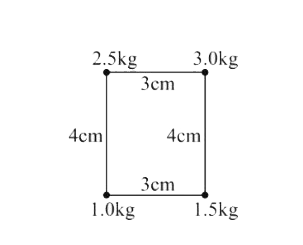Round the following
We need 29.5 kg of flour and 4.2 kg of ghee to make halwa for tomorrow's festivities.
To round the quantities of flour and ghee needed for making halwa, follow these steps:
Step 1: Identify the quantities to be rounded
We have two quantities:
- Flour: 29.5 kg
- Ghee: 4.2 kg
Step 2: Round the quantity of flour (29.5 kg)
- Look at the decimal part of the number 29.5. The digit after the decimal is 5.
- According to rounding rules, if the digit after the decimal is 5 or greater, we round up the whole number.
- Therefore, 29.5 kg rounds up to 30 kg.
Step 3: Round the quantity of ghee (4.2 kg)
- Look at the decimal part of the number 4.2. The digit after the decimal is 2.
- Since the digit after the decimal is less than 5, we round down.
- Therefore, 4.2 kg rounds down to 4 kg.
Step 4: Write the rounded quantities
- After rounding, we have:
- Flour: 30 kg
- Ghee: 4 kg
Final Statement
We need approximately 30 kg of flour and 4 kg of ghee to make halwa for tomorrow's festivities.
---
We have two quantities:
- Flour: 29.5 kg
- Ghee: 4.2 kg
- Look at the decimal part of the number 29.5. The digit after the decimal is 5.
- According to rounding rules, if the digit after the decimal is 5 or greater, we round up the whole number.
- Therefore, 29.5 kg rounds up to 30 kg.
- Look at the decimal part of the number 4.2. The digit after the decimal is 2.
- Since the digit after the decimal is less than 5, we round down.
- Therefore, 4.2 kg rounds down to 4 kg.
- After rounding, we have:
- Flour: 30 kg
- Ghee: 4 kg
We need approximately 30 kg of flour and 4 kg of ghee to make halwa for tomorrow's festivities.
Topper's Solved these Questions
- PHYSICAL QUANTITIES AND MEASUREMENT BOOK - ICSECHAPTER - PHYSICAL QUANTITIES AND MEASUREMENT EXERCISE - Questions (Observe the figures and answer the questions)
4 Videos
- PHYSICAL QUANTITIES AND MEASUREMENT BOOK - ICSECHAPTER - PHYSICAL QUANTITIES AND MEASUREMENT EXERCISE - Questions (Match the following)
2 Videos
- MODEL TEST PAPERS BOOK - ICSECHAPTER - MODEL TEST PAPERS EXERCISE - TEST PAPER II (SECTION II) Numerical questions
2 Videos
Similar Questions
One kind of cake requires 200 g of flour and 25 g of fat, and another kind of cake requires 100 g of flour and 50 g of fat. Find the maximum number of cakes which can be made from 5 kg of flour and 1 kg of fat assuming that there is no shortage of the other ingredients used in making the cakes. Make an L.P.P. of the above and solve it graphically.
View SolutionOne kind of cake requires 200 g of flour and 25 g of fat and another kind of cake requires 100g of flour and 50 g of fat. Find the maximum number of cakes which can be in make from 5 kg of flour and 1 kg of fat, assuming that there is no shortage of other in gradients used in making the cakes. Formulate the above as a linear programming problem and solve it graphically.
View SolutionOne kind of cake requires 200 g of flour and 25 g of fat, and another kind of cake requires 100 g of flour and 50 g of fat. Find the maximum number of cakes which can be made from 5 kg of flour and 1 kg of fat assuming that there is no shortage of the other integredients used in making the cakes. Formulate the above as a linear programming problem and solve graphically.
View SolutionOne kind of cake requires 300g of flour and 15g of fat, another kind of cake requires 150g of flour and 30g of fat. Find the maximum number of cakes which can be made from 7.5 kg of flour and 600f of fat, assuming that there is no shortage of the other ingredients used in making the cakes. Make it as an L.PP. and solve it graphically.
View SolutionA cereal mixture contains wheat and corn. If 3.5 kg of cereal has 2 kg of wheat, how much wheat will be there in 5.6 kg of cereal ?
View SolutionRound off the following measures to the nearest hundreds: 940kg (ii) 273l (iii) 820 mg
View SolutionFour point particles of masses 1.0 kg, 1.5 kg, 3.0 kg and 2.5 kg are placed at four corners of a rectangle of sides 4.0 cm and 3.0 cm as shown in the figure. The centre of mass of the system is at a point:

View SolutionFour point particles of masses 1.0 kg, 1.5 kg, 3.0 kg and 2.5 kg are placed at four corners of a rectangle of sides 4.0 cm and 3.0 cm as shown in the figure. The centre of mass of the system is at a point:

View SolutionThe cost of 2kg of apples and 1 kg of grapes on a day was found to be Rs 160. After a month, the cost of 4 kg of apples and 2 kg of grapes is Rs 300. Represent the situation algebraically and geometrically.
View SolutionThree bodies having masses 5 kg, 4 kg and 2 kg is moving at the speed of 5 m/sand2m//s and 5 m/s respectively along X-axis.The magnitude of velocity of centre of mass is
View Solution
